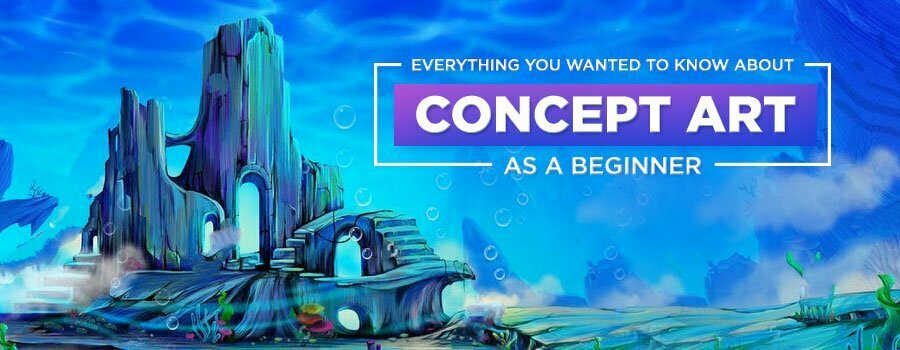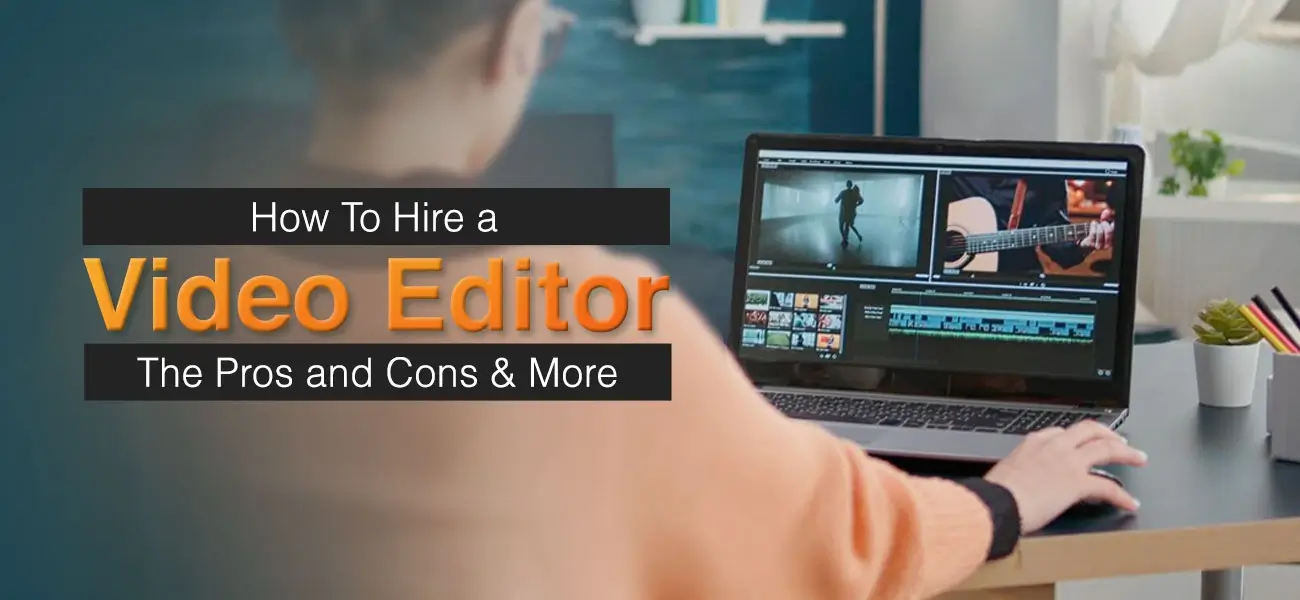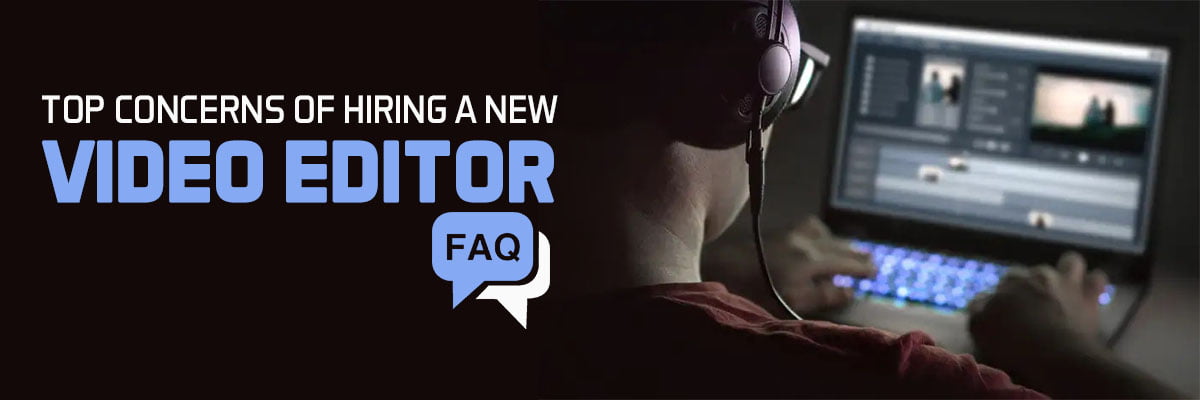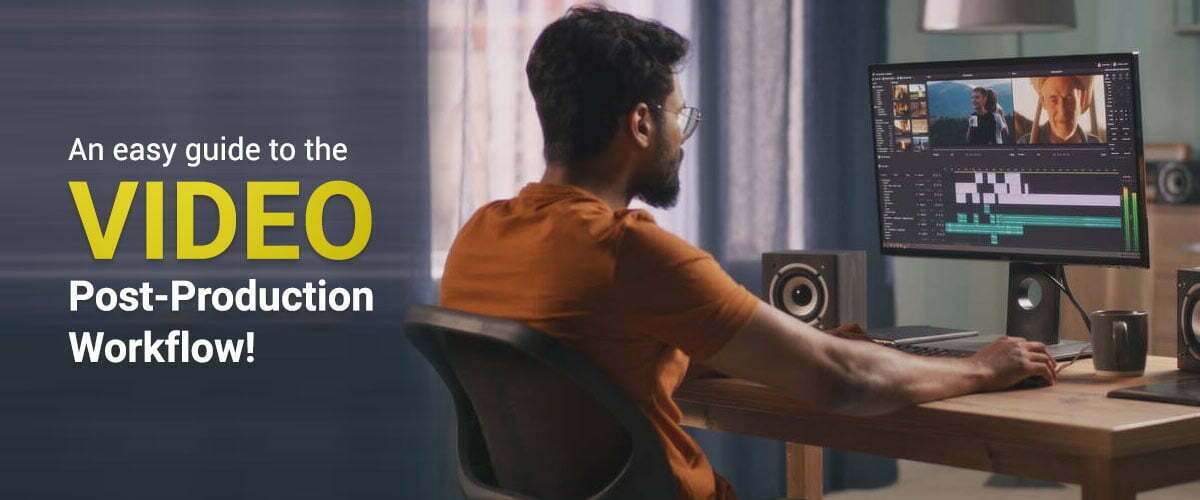Concept art differs from conventional art. Although the same artistic principles are applied for developing both art forms yet they are fundamentally different. 2D art forms or illustrative drawings are designed because the artist wants to express his/ her creative instincts. In contrast, concept art develops as an outcome of the design process. The art is design based.
A concept artist is not bothered about the beauty of the art form developed or the exquisite manner of its execution. The art form gradually develops on its own during designing. The art is in sync with the conceptual story being told. Concept art bases itself on two premises i.e. requirements and demands. Conceptualization of the requirement of the story takes first priority. As per the demands of the unfolding story, further artistic development is done for supporting the story.
Concept artist leverages art as a communication medium for connecting the idea to the production. S/he can be motivated by real-life characters of contemporary or historical backdrop can uniquely interpret events from a different perspective or create something fictional. The visual development may be oriented towards catering to different entertainment domain components like movies, animations or games.
The concept design artist has to shoulder many responsibilities. S/he has to outline the emotional quotient of the art form. Also, s/he needs to spell out guidelines accurately and clearly for other artists to develop the designs adequately.
Differences between Concept Art and Illustration
Illustration and conceptual drawing share similarities yet have their unique features. A concept artist must factor in following points for spectacular outcomes
- Environmental aspects of art
- Relation of character with its history
- Placing context clearly for each image
- Adding perspective to instant and static images to facilitate seamless transition among scenes
During illustration, one need not bother about such external dynamics. Drawings prepared are not required to be sequenced in a continuous series for demonstrating a concept.
A concept artist is also aware of three -dimensional facet of art. The world is visualized from the viewpoint of the subject in a manner that the ambience, even though is not evident in the image, is vibrant and tangible. For instance, when the concept of building’s exterior is being developed, the artist would also focus on how the facade would appear from the interior or top.
Different Concept Art Types
Concept art can be of different types. These are discussed below.
Environment Concept Art
- The focus is on landscape and scene creation for hosting the expected action
- The composition is blended perfectly with architectural designing and perspective
- Commonly, 3D software is used for creating these art types
- The ambience and mood of the project is reflected through final design
Character Concept Art
- The focus is on developing unique and exotic characters and subjects for the project
- Attractive costumes and complementary objects are designed in character concept art
- Knowledge of anatomical construction of humans and animals is a must
- Character’s body is developed realistically and given a depth of perspective
- Artform can consist of dreadful monsters, outlandish creatures, imposing beasts, etc.
- Created characters may not belong to the real world but resemble the appearance and behavior of real humans/ animals
- Characters are made to follow natural laws of proportions to render them credible
Concept Art related to Designing of Assets and Weapons
- The focus is on building tools, objects, and weapons to prep up the character
- Assets are developed for all characters which are integral to the project
- 3D software is commonly used for shaping the assets
- Familiarity with industrial designing processes can enhance the appeal of the art
- The art bears resemblance to the concept of designing products
Developing Concept Art as a Beginner
When you plan to draw your first concept art, you need to give an expansion to your imagination. Quickly replay an action film or a thrilling animated game in your mind. Portray mentally the futuristic scenes, wildly imaginative city surroundings, the weird atmospherics, and the surreal ambience that are placed to enhance scenes’ appeal.
With your concept illustrations, you too have to breathe life into such dynamic art forms. Your creative ideas would have to be transformed into tangible art with strategic tools and your competence. The art you would develop would shore up further development in the game or film.
As a concept artist, you would render non-existent art forms appear realistic. The visual design has to be given a concrete shape so that the desired outcome is achieved. Different components of concept art have to be discretely developed and then need to be conflated to ensure an impeccable final project. This eliminates flaws to a large extent as well as helps in optimizing time and expenses.
With concept art, you have to visually demonstrate an idea with proper design and atmospherics by setting the right mood. The art can be used in a versatile manner in different media such as movies, architectural rendering, games, etc. As we saw above in concept art vs illustration discussion, conceptual drawing, unlike illustration, involves iteration and imagination.
You may not experience success in the first attempt. Patiently, you need to exercise your creativity through repeated moves to achieve perfection. A lot of reworking would be involved in the same art form until the final result come out polished and visually appealing.
The art you design would be referred to constantly by developers of films or games. Your concept creation would be defining the film’s or game’s style, ambience, tone, and character setup. The profession is creatively demanding as you have to regularly deliberate over art forms to figure out if they supplement the project or undermine it.
For being successful, you need to be passionate, determined and full of dynamism. We will now discuss the key considerations that you must factor in for developing compelling 3d concept art.
-
Always Plan Your Concept Art
Starting to sketch upfront without due planning would not lead you anywhere. Concept art sketches are important but you have to proceed carefully. Your art would represent the final version of the product and would shore up the project’s flow always. With the artistic language, you have to effectively articulate your ideas.
When starting to develop a concept art form, you should plan out in the following manner though not strictly as per the sequence below.
- Deliberate over the ideas making ripples in your mind and note them down
- Figure out the shape you are trying to develop exactly
- Build clarity on the concept
- Create a basic table in which all ideas are listed serially
- Think about the genre you would address i.e. fiction, fantasy, horror, sci-fi, etc.
- Determine the gender and species of the character
- Decide whether the character would have splendor, ugliness, pluckiness or anything else
- Assess the character’s specialty i.e. whether it would wield a weapon or move nimbly around
- Your concept sketch can be about landscape or architecture of the project
- Always have a table of priorities ready for overcoming the creative obstacles confronted during the process
- Keep creating various versions of the art form as the process achieves perfection through iteration
- Understand the project from the perspective of complete design and composition
With a plan in place, you can focus on things that matter the most and can work diligently during the project lifecycle.
-
Get Hold of Correct Tools
For creating compelling concept art, you need access to proper and strategic tools and for the same, there are no alternatives. The art form can be created on paper with a pencil. Else, you can prefer the digital substitute of this conventional method in the form of Wacom tablet. You have to gradually familiarize yourself with digital tools but they are more flexible and offer better options.
You need to keep in mind certain key points to be successful.
- Go for standard digital platforms such as Adobe Photoshop to do digital concept art
- Prefer technologically advanced digital mode over traditional methods
- Exploit the flexibility and diversity of digital tools to add cutting-edge to your art
- You can work with a number of brushes
- Always start with basic brushes which have hard rounds or soft touches
- You can also experiment with brushes which don’t have textural painting support
- Texture brushes can be used later on for refining the artwork
- Certain aspects of art would require more texturing
You can add minute details to the concept art with vivid brushes such as particle brush, cloud brush, forest brush etc.
You can easily create different versions of the concept art with digital tools
-
Practice Concept Sketching
After selecting the tools and finalizing the theme of the artwork, you can proceed towards concept sketching. The exploration and communication of the ideas related to the project can be started in an informal way in visual mode with concept sketching.
The concept sketch is the initial rendering of the look of a particular subject of the game or movie. The feel is informal. You have to form an idea of the overall size and shape of the characters and assets to be used in the project.
The general steps that you may adhere to during concept sketching for stellar results are discussed below.
- Create thumbnails (the process is called thumbnailing) to dive deeper into your creative channels
- Thumbnails allow generation of limitless ideas
- Experiment with different ideas before finalizing the most relevant one
- You can explore more ideas that fascinate you which help you to improve the concept art workflow
- Without overstressing your skills, you can try out different shapes, moods, features, and ambiences
- Try to create as many basic silhouettes as possible to make your work more vibrant
- Go about refining and adding depth to the sketch that captures your imagination
- Thumbnails can be used for referring your ideas to other artists, project director or clients so that you can secure needful feedbacks
-
Refine Your Concept Art
After the concept sketching has been finalized, you have to refine the work. The thumbnails have to be aligned in a manner that would enhance the narrative of the project. Thumbnails should resemble the fantasy character concept art or other elements that you are trying to design.
Some of the important things to consider at this stage are discussed below.
- Refrain from adding an excess of details straightaway
- To make sense, the thumbnails have to be tweaked and twisted adequately
- Have a clear idea of the direction in which your concept art design is proceeding
- Try to offer better visibility to the elements of style, character’s size and shape, and object’s peculiarities
- The ancillary objects which would complement your character (like the weapon for a mythical anime concept art) should be dimensionally proportionate to the subject
- Create different variations of the concept art
- This would help you experiment with the concept in a better manner
- Consider enhancing the key aspects of the character
- You can also create fewer versions in which certain aspects of the subject are missing
- Try to insert new elements after initial experiments
- Pursue the process with due diligence
- Regularly evaluate your work and the process of doing the same
- Allow yourself quality time for fixing things that are not consistent with the theme
- Be more creative and come up with newer, exciting variations
-
Finish Up With Your Concept Art
Before winding up with the process of creating concept art, you need to add details which breathe life and value in your work. For this,
- Choose the color of a lighter or darker shade to accentuate the character or artwork
- Adjust spatial illusions properly to create a sense of space
- You can consider creating concept sketches and thumbnails in grey shade prominently
- Add vivid details to the ultimate piece of your concept art
- For adding depth to the art, work with the value of the concept art in mind
- Highlight the artwork’s value with adequate texturing and lighting
- Try to incorporate more realism to the art to make it understandable for audiences
- Always focus on effective and coherent storytelling
- Build the mood of the concept art with atmospheric additions and enhancements
Summary
It is now abundantly clear to you that fantasy, anime, architectural or animation concept art is intended to showcase ideas for entertainment media majorly. Games or films become more vibrant with carefully created concept art.
Concept art is a visual representation of the dominant theme of the project. The concept artwork serves as a reference point for the progression of the project. It differs from illustration services as ideas are conceptualized at different stages of the project to complement the need for narrative.
Concept art creation involves iterations. You need to understand the essential theme of the project. Proper ideation allows channelizing of creative energies optimally. Always start with proper digital tools for impeccable results. Thumbnailing and concept sketching are essential for success. Iterate the work regularly and refine the concept art in each version. Add value to the final concept art with proper lighting, texturing and enhancing of subtle features.




